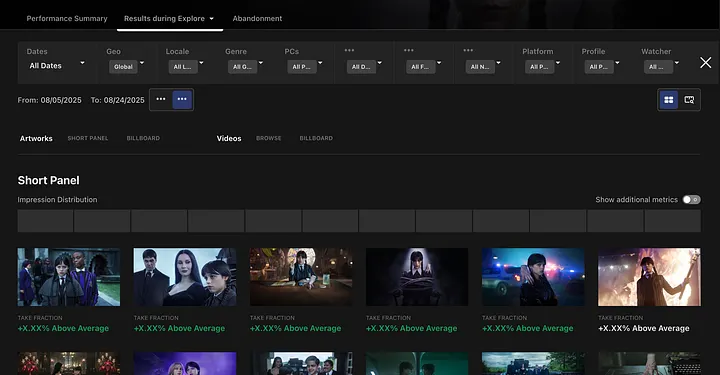扩展的缪斯:Netflix如何在万亿行规模下推动数据驱动的创意洞察
[
[
By Andrew Pierce, Chris Thrailkill, Victor Chiapaikeo
由Andrew Pierce、Chris Thrailkill、Victor Chiapaikeo撰写
At Netflix, we prioritize getting timely data and insights into the hands of the people who can act on them. One of our key internal applications for this purpose is Muse. Muse’s ultimate goal is to help Netflix members discover content they’ll love by ensuring our promotional media is as effective and authentic as possible. It achieves this by equipping creative strategists and launch managers with data-driven insights showing which artwork or video clips resonate best with global or regional audiences and flagging outliers such as potentially misleading (clickbait-y) assets. These kinds of applications fall under Online Analytical Processing (OLAP), a category of systems designed for complex querying and data exploration. However, enabling Muse to support new, more advanced filtering and grouping capabilities while maintaining high performance and data accuracy has been a challenge. Previous posts have touched on artwork personalization and our impressions architecture. In this post, we’ll discuss some steps we’ve taken to evolve the Muse data serving layer to enable new capabilities while maintaining high performance and data accuracy.
在 Netflix,我们优先考虑将及时的数据和洞察交到能够采取行动的人手中。我们为此目的的一个关键内部应用是 Muse。Muse 的最终目标是通过确保我们的促销媒体尽可能有效和真实,帮助 Netflix 会员发现他们会喜欢的内容。它通过为创意策略师和发布经理提供数据驱动的洞察,展示哪些艺术作品或视频片段与全球或区域观众产生最佳共鸣,并标记出潜在误导性(点击诱饵)资产等异常值,从而实现这一目标。这类应用属于在线分析处理(OLAP),这是为复杂查询和数据探索而设计的系统类别。然而,使 Muse 能够支持新的、更高级的过滤和分组功能,同时保持高性能和数据准确性一直是一个挑战。之前的帖子提到了 艺术作品个性化 和我们的 印象架构。在这篇文章中,我们将讨论我们为发展 Muse 数据服务层以启用新功能而采取的一些步骤,同时保持高性能和数据准确性。
Press enter or click to view image in full size
按回车键或点击以查看完整图像

Muse application
Muse 应用程序
An Evolving Architecture
不断演变的架构
Like many early analytics applications, Muse began a...